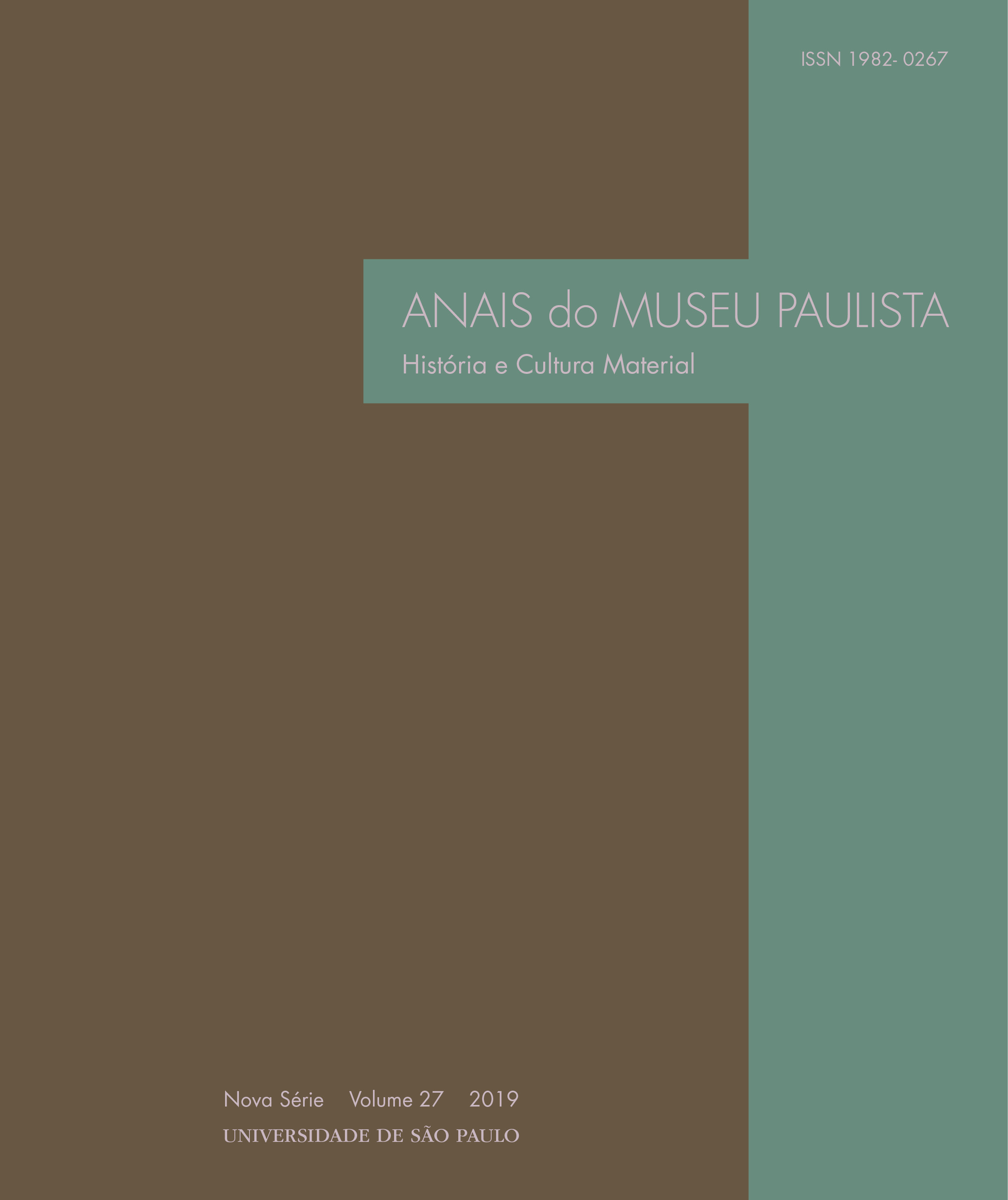Looking at the past at Tiradentes Palace
a collective portrait of republican authority disguised as hope
DOI:
https://doi.org/10.1590/1982-02672019v27e09Keywords:
Tiradentes Palace, Constitution of 1891, Eliseu Visconti, Brazilian art in the first RepublicAbstract
This articule aims discuss the history of the Tiradentes Palace’s creation in the contexto of the publics building constructions that marked the brazilian republican government authority at the Rio de Janeiro city during the firts decade of the twenthy decades. It try to understand the symbolics relations meant for the comitee responsible for the choice the iconographic program adopted to de Tiradentes Palace’s decoration. It also presentes a case study about one of decorative paintings that composse the Tiradentes Palace’s iconographic program: the work Signing of the Constitution of 1891 (1926) by Eliseu Visconti. The objective is to undertand the symbolic intentions inherents to the choise oh the Constitutions if the 1891 subject within a guidelines republican iconographic program. After all, to reflect about hou Eliseu Visconti took care and reinvented the theme of the Constitution inside some tradition artistic.
Downloads
Downloads
Published
Issue
Section
License
Autores que publicam nesta revista concordam com os seguintes termos:
- Autores mantém os direitos autorais e concedem à revista o direito de primeira publicação, com o trabalho simultaneamente licenciado sob a Licença Creative Commons Attribution que permite o compartilhamento do trabalho com reconhecimento da autoria e publicação inicial nesta revista.
- Autores têm autorização para assumir contratos adicionais separadamente, para distribuição não-exclusiva da versão do trabalho publicada nesta revista (ex.: publicar em repositório institucional ou como capítulo de livro), com reconhecimento de autoria e publicação inicial nesta revista.
- Autores têm permissão e são estimulados a publicar e distribuir seu trabalho online (ex.: em repositórios institucionais ou na sua página pessoal) a qualquer ponto antes ou durante o processo editorial, já que isso pode gerar alterações produtivas, bem como aumentar o impacto e a citação do trabalho publicado (Veja O Efeito do Acesso Livre).



